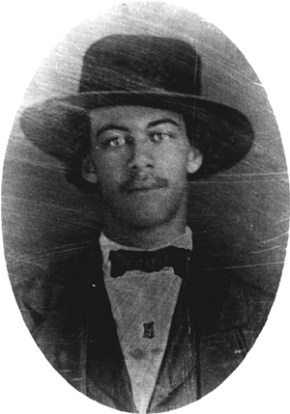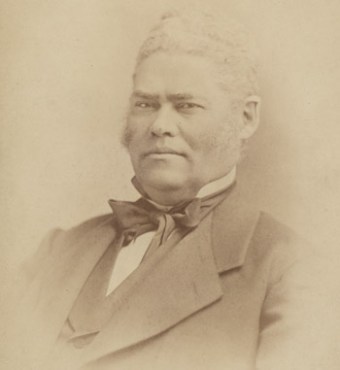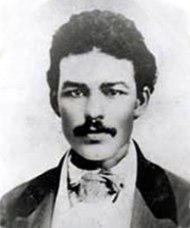
Lewis Sheridan Leary (1835–1859), a harnessmaker from Oberlin, Ohio, joined John Brown’s unsuccessful raid on Harpers Ferry, where he was killed. Leary was born in Fayetteville, North Carolina, to Matthew N. Leary, also a harnessmaker, and Julia Memril Leary. His paternal grandfather was an Irishman, Jeremiah O’Leary, who fought in the American Revolution under General Nathanael Greene. A paternal great-grandparent, Abram Revels, a free man of color, was also a Revolutionary War veteran. His mother’s grandmother was “French Mary,” a freed West Indian who was a well-regarded cook in Fayetteville.
In the mid-1850s, Leary moved to Oberlin, Ohio, where two of his sisters had settled. One sister, Sarah, had married Henry Evans, whose sister Delilah Evans Copeland, the mother of John A. Copeland Jr., another John Brown follower. Leary married Oberlin College graduate Mary Patterson, and had a daughter, Louise. Leary became involved with abolitionists in Oberlin, which had an active community. Later, he met John Brown in Cleveland, Ohio.
In 1858, Leary joined in the Oberlin-Wellington Rescue, when fugitive slave John Price was forcibly taken from the custody of a U.S. Marshal to prevent his being returned to slavery . He was not among the 37 men (twelve of them free men of color) who were indicted and jailed for their actions.
Accompanied by Copeland, Leary joined John Brown at Chambersburg, Pennsylvania. Leary died eight days after the attack on Harper’s Ferry from wounds suffered in the conflict. Copeland was captured, tried and later executed.
Leary’s family remained in Fayetteville during the Civil War. During Reconstruction, his father and a brother served as city councilmen and county commissioners, and his brother Matthew Leary Jr. was an early trustee of the college that became Fayetteville State University. Leary’s youngest brother, John Sinclair Leary, graduated from Howard University in 1871 and was one of the earliest black attorneys admitted to the bar in North Carolina. He served in the state legislature for two terms as a Republican representative for Cumberland County during Reconstruction, and in 1884 was sent as a delegate to the National Republican Convention. He later founded and served as the first dean of the Shaw University Law School, and in the 1890s moved his family and practice to Charlotte. Today the Charlotte chapter of the North Carolina Association of Black Lawyers is named the John S. Leary Bar Association in his honor.
Adapted from “Tar Heels at Harper’s Ferry, October 16-18, 1859,” http://www.nccivilwar150.com/history/john-brown-nc.htm, published by the North Carolina Department of Cultural Resources.
Photograph, c. 1850s, courtesy of Oberlin College Archives, Oberlin, Ohio.
In the 1860 census , Fayetteville, Cumberland: Matthew Leary, 48, wife Julia A., 42, Matthew, 17, Lewis S., 15, Julia A., 12, John S., and Mary E., 13.


